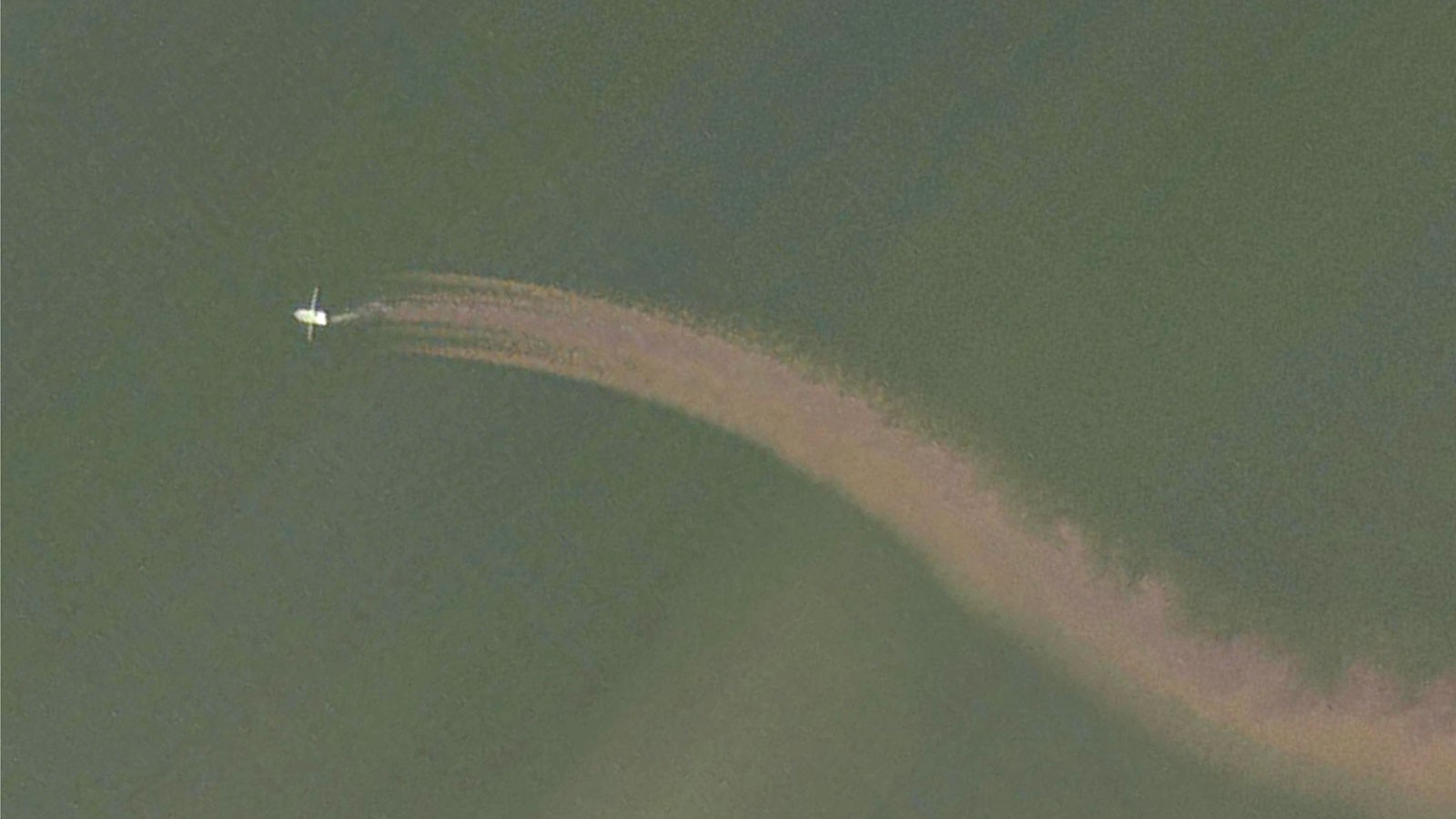New Research Documents Bottom Trawling as Major Source of Carbon Added to Atmosphere
A satellite image showing a twin-rigged shrimp trawler in the northern Gulf of Mexico raising a plume of sediment off the seafloor.
As countries work to cut emissions from fossil fuels, deforestation and other sources, a major study led by Trisha Atwood from the Quinney College of Natural Resources has found that bottom trawling — dragging heavy fishing nets across the ocean floor — can trigger significant atmospheric carbon pollution.
The new research shows that bottom trawling is responsible for releasing up to 370 million metric tons of carbon dioxide into the atmosphere each year, and that trawling in East China, Baltic, North Sea and Greenland Sea have largest impact on the climate.
The recently released study found that 55-60% of the carbon dioxide produced when trawlers disturb marine sediments makes its way from the water into the atmosphere within nine years. This is a significant amount — the tally of the carbon released into the atmosphere each year from bottom trawling increases the estimated carbon footprint of the global fishing industry by over 200%.
“Bottom trawling unleashes plumes of carbon which otherwise would be buried for millennia in the ocean floor,” Atwood said. “Our study is the very first to show that over half the carbon released by bottom trawling eventually escapes into the atmosphere as carbon dioxide over the span of about 10 years, contributing to global warming.”
The study, “Atmospheric CO2 Emissions and Ocean Acidification From Bottom-Trawling,” was conducted by a team of climate and ocean experts from Utah State University, NASA Goddard Institute for Space Studies, the University of California Santa Barbara, Columbia University, James Cook University and National Geographic Pristine Seas.
The researchers used sophisticated ocean models and data on bottom trawling activity globally between 1996-2020 to calculate how much of the carbon dioxide produced by the activity ultimately enters the atmosphere.
This study builds on Atwood's previous research, which quantified how much carbon was being disturbed by global bottom trawling, but the previous work stopped short of estimating how much of that carbon is released into the atmosphere as carbon — a critical piece of information for climate policy.
The new research identifies areas where carbon emissions from bottom trawling are especially high, including the East China Sea, the Baltic and the North Seas, and the Greenland Sea. The researchers concluded that Southeast Asia, the Bay of Bengal, the Arabian Sea, parts of Europe and the Gulf of Mexico are also likely major sources of carbon emissions due to trawling, but we currently lack sufficient data on the extent and intensity of bottom trawling in these areas.
Countries don’t currently account for bottom trawling’s significant carbon emissions in their climate action plans, the authors say, and indicate that reducing bottom trawling carbon emissions has potential to deliver significant benefits toward reducing carbon emissions in the short-term.
The study also assessed what happens to the carbon that remains trapped in ocean waters after bottom trawling takes place. It concluded that between 40-45% of the total carbon dislodged from the ocean floor by trawling remains in the water as CO2, potentially leading to greater localized ocean acidification, a process that can damage local plants and animals.
“There are more issues with bottom trawling than just the impacts from carbon — biodiversity and sustainability, for instance,” said Gavin A. Schmidt, the director of the NASA Goddard Institute for Space Studies and coauthor on the research. “But this ‘marine deforestation’ is large enough to be noted and assessed. Hopefully, this can lead to policy efforts that can try to maximize benefits across all of the impacts.”
CONTACT
Trisha Atwood
Associate Professor
Department of Watershed Sciences and Ecology Center
trisha.atwood@usu.edu
TOPICS
Environment 263stories Water 259stories Global 42storiesComments and questions regarding this article may be directed to the contact person listed on this page.







